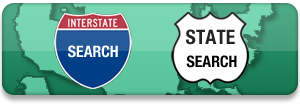You don’t have to be a through-hiker with a backcountry permit and backpacking equipment to experience Kauai’s Na Pali Coast.Yes, the further you hike, the more you’ll see, but it’s entirely possible to hike just half a day and see enough to be wowed.

The Kalalau Trail runs 11 miles one-way along the stunning and steep Na Pali Coast, and provides the only means of traveling this section of Kauai coastline…on foot. Through-hikers either traverse the entire 11 miles in one day, camp at the end near the south shore, then hike back, or break up the adventure further, camping en route at about mile six, mile 11, and mile 18. It’s a route that requires the right gear, plenty of fresh water, and nerves of steel on some sections, where the trail hugs the mountains with steep drop-offs to the ocean.
Experiencing the Kalalau Trail with kids:
Most likely, you’re not prepared to make a multi-day adventure out of the Kalalau with kids in tow, but parents can certainly carve out a day of a Kauai beach vacation to see some of the trail. Start at Ke’e Beach on the North Shore, literally at the end of the road (you can go no further on Highway 56). The trailhead is well-marked, and you’ll likely see plenty of other hikers. Get to the trailhead early (before 9 am is best), as the parking lot fills up fast.

From the start of the trail at Ke’e Beach, families have multiple options on the length of their hike. We suggest:
- hiking 1/2 mile in to the lookout point, then heading back for a 1 mile hike with preschoolers and young kids
- hiking 2 miles in to Hanakapai’ai Beach, returning for a 4 mile hike with kids or teens
- hiking 2 miles to Hanakapai’ai Beach, then an additional 2 miles up a side trail to Hanakapai’ai Falls and back, for a total of 8 miles with strong hikers

No matter which option you decide is best for you, note that the way will be steep. The Kalalau Trail rises and falls in elevation with every quarter mile (sometimes with every step!), with rocks, water runoff, and mud throughout. In many places, there are significant drops on the side of the trail to the ocean. There are not guardrails or other safety measures in place, so it’s crucial that young children are secured or holding a parent’s hand and older children follow directions and refrain from running along the trail.

Our extended family of 11 set out on the trail on a March morning, with the plan to hike the four mile out-and-back with the option of some family members continuing on for the eight mile option. We made a family rule: all kids, even the teens, would be sandwiched between adults as we hiked. This prevented my teens from running ahead, and the preschooler and kindergartener from feeling left behind or getting too close to the edge. No where in the first two miles of the trail did we feel the trail was too dangerous, and I never felt too close to the edge, but a child running, jumping, or playing along the trail would not work.

We hiked the first two miles slower than our usual pace, due to the steep trail but also due to the many photo opps along the way. At the 1/4 mile marker, families get their first glimpse of beautiful Ke’e Beach from above, but the even better views are yet to come at the 1/2 mile. The trail is mostly uphill for the first mile, then downhill for the second, as the trail drops down into Hanakapai’ai Valley and they rugged beach there.
There’s a pretty major creek crossing right before arriving at the beach, which can be either an exciting reward for reaching the destination or a final obstacle, however you want to think about it. We had to help the young kids across, but the teens managed just fine. On the other side, there’s room for a picnic lunch and some ocean watching, but no swimming…the beach here is unsafe for swimming. Check out the lovely cairns other hikers have made from the smooth rocks lining the shore, instead.
If you’re going on to Hanakapai’ai Falls, be sure to have plenty of water and adequate supplies, such as an extra layer of clothing, a small first aid kit, and snacks. The additional two miles to the falls is among the most strenuous I’ve encountered anywhere. There were at least six creek crossings, lots of muddy trail, slick rocks, and some actual bouldering to get up to the falls. The reward: one of the most beautiful falls I’ve ever seen, with space to take a dip in it’s pool. (Though if you opt not to get in the chilly water, you’ll get wet from the spray coming off the falls anyway!)
Retrace your steps to return to the beach, then retrace again to return all the way back to Ke’e Beach where you’ll end your eight mile day. We found the experience amazing, and would recommend the falls to anyone in good shape and used to hiking. The youngest hiker in our group for the extended hike to the falls was age 13. However, all kids, from age 4 and up, made it to and from the beach for a total of four miles.
What to wear:
Don’t wear your swimsuit, unless it’s comfortable to hike in. The only swimming is at the falls, and even that’s primarily a quick dunk. Be sure to have hiking shoes or very sturdy, rugged sandals, such as Keens or Tevas. Running shoes are a good bet, if you prefer them to hiking boots. (Browse more good stuff at Runnerclick.) I wouldn’t recommend anything without a closed toe. Wear sunscreen and sun protective clothing, and consider a bug repellent. We didn’t encounter many insects, but the area is known for them in certain times of year.
Additional activities and excursions to try on Kauai:
Cost of trail:
Free
Hours of operation:
Daylight hours. Note that the trailhead is often closed, depending on weather. The trail closes in severe rain, due to slippery mud and heavy flow of the creeks along the route (hikers have been swept all the way out to sea via flooded creeks along the trail). If the trail is closed when you arrive, wait a while. It usually opens. This was the case on our visit: at 9 am it was closed following a rainfall. We snorkeled at Ke’e Beach for a while, then the trail opened at about 10:30. This gave us a later start than we’d like, so please note possible trail closures when planning your trip.
Directions:
From Hanalei, continue along 57 to the end of the road, at Ke’e Beach.



































